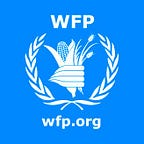Growing the right crops in the right places
The World Food Programme in Jordan teamed up with the Children of the Valley NGO for their second annual Khubaizeh Festival.
Before packaged supplements and vitamin tablets, our ancestors used plants growing around them for nutrition. The evolution of humans from hunters and gatherers to farmers came with an agricultural revolution. For thousands of years, plants have been used by ancient Greeks, Romans, and Egyptians as food and medicine. Today, the fight against malnutrition remains one of the biggest challenges facing the world and simply going back to growing the right crops in the right places could be part of the solution.
Let’s start with Khubaizeh, a plant local to Jordan, which has a distinctive taste similar to spinach, but is even more nutritious. It is an ideal substitute to other leafy greens, known for its immense health benefits and low cost.
Toward homegrown agriculture
Initiated in February 2016, the Khubaizeh Festival has created jobs for both Syrians and Jordanians living in the Jordan Valley — one of the poorest areas in Jordan. While celebrating plants indigenous to the area, the festival brings families together, inspiring them to cook and eat nutritious homegrown crops.
In March, WFP in Jordan teamed up with the Children of the Valley NGO for their second annual Khubaizeh Festival. Since one of the key obstacles to the fight against malnutrition is a lack of knowledge about the true nutritional value of local foods, WFP was eager to join in on educating and promoting healthy choices.
A blooming partnership
The luscious farm where the festival was held is owned by Mohamed Attiyeh, director of Children of the Valley NGO and the mastermind behind the initiative.
“Speaking from my heart, we are excited and truly honored to have partnered with, WFP particularly after knowing that we share the same goals. We hope this will be just the beginning of an even larger and more fruitful partnership as the years pass.”
Investing in the next generation
WFP had a fruitful presence at the festival’s Farmer’s Market. Children and adults alike gathered around the WFP stand introducing our new “smart mugs”. These colorful mugs are particularly special to WFP as the drawings they feature are designed by Syrian and Jordanian children who benefit from WFP’s national school meals programme in collaboration with Jordan’s Ministry of Education. With each purchase, WFP received more support to feed schoolchildren in Jordan.
WFP was also proud to see a group of women from the Jordan Valley participating in the farmer’s market who were trained as pastry chefs under WFP’s Cash for Training programme, in partnership with Jordan’s National Alliance Against Hunger and Malnutrition (NAJMAH). The smell of their home-baked treats brought people lining up.
Planting seeds for a healthier tomorrow
The Festival also provided a platform for WFP to educate children on the importance of nutrition. The closing ceremony of the Khubaizeh Festival was exclusively held for school visits. WFP talked with the children about how we can prioritize nutrition in our lives. The conversation continued over a healthy and delicious meal of fresh Khubaizeh pastries, sandwiches and dips prepared by Mohammad and his team.
